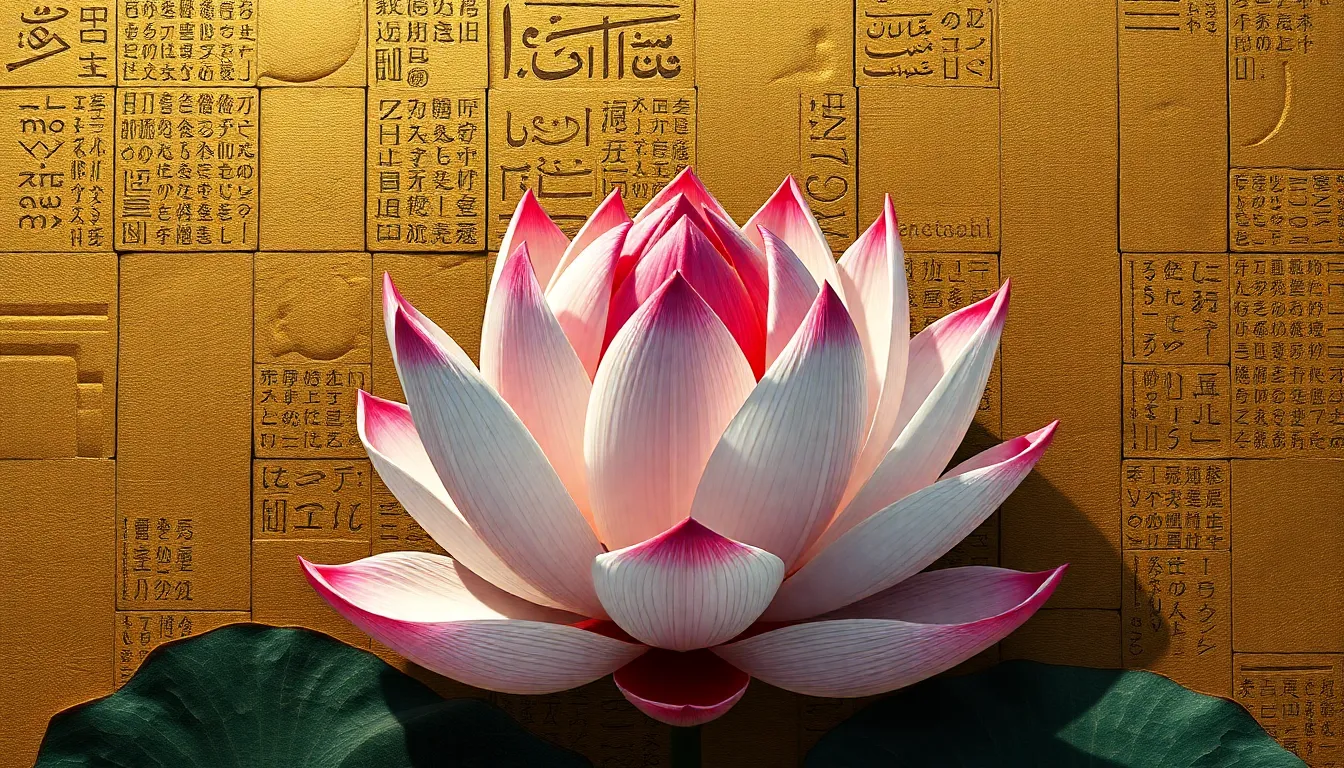The Significance of the Lotus Flower in Tomb Texts
I. Introduction
Throughout ancient cultures, tomb texts served as vital inscriptions that provided insights into the beliefs and practices surrounding death and the afterlife. In ancient Egypt, these texts were not merely decorative; they encapsulated profound spiritual concepts that guided the deceased in their journey to the afterlife.
One of the most potent symbols featured in these inscriptions is the lotus flower. Renowned for its beauty and resilience, the lotus carries deep significance within the context of Egyptian mythology and funerary practices. This article seeks to explore the multifaceted role of the lotus flower in tomb texts, examining its historical context, symbolism, artistic representations, and its connections to deities.
II. Historical Context of Tomb Texts
Tomb texts, often referred to as funerary texts, were inscriptions that adorned the walls of tombs and the coffins of the deceased. Their primary purpose was to provide guidance and protection for the soul in the afterlife. These texts evolved significantly over time, reflecting changes in religious beliefs and funerary practices.
- Old Kingdom: The earliest examples of tomb texts, such as the Pyramid Texts, were inscribed in the pyramids of pharaohs, emphasizing the divine status of the rulers.
- Middle Kingdom: The Coffin Texts emerged, which were more accessible to non-royal individuals, indicating a broader belief in the afterlife.
- New Kingdom: The Book of the Dead became prominent, a collection of spells intended to assist the deceased in navigating the challenges of the afterlife.
The evolution of these texts highlights the importance of funerary practices in ancient Egyptian society, where belief in an afterlife influenced every aspect of life, including art, architecture, and daily activities.
III. Symbolism of the Lotus Flower
The lotus flower, particularly the blue lotus (Nymphaea caerulea), is a remarkable plant that grows in the Nile River. Its unique characteristics contribute to its significance:
- The flower blooms at dawn and closes at night, symbolizing the cycle of life and death.
- The lotus rises from the mud, representing purity and rebirth.
In ancient Egyptian religion, the lotus was not only a symbol of beauty but also an embodiment of creation and regeneration. It was often associated with the sun and the cycle of rebirth, making it a powerful motif in funerary contexts.
IV. The Lotus Flower in Funerary Texts
Numerous tomb inscriptions feature the lotus flower, illustrating its significance in the context of the afterlife. These texts often describe the lotus in relation to the deceased’s journey towards eternal life.
- For example, the phrase “I am the lotus flower” appears in several texts, signifying the deceased’s transformation and rebirth.
- In the Pyramid Texts, the lotus is mentioned in spells that invoke its powers to aid the deceased in overcoming obstacles in the afterlife.
The connection between the lotus and the journey to the afterlife is profound, as it represents the soul’s ascent from the earthly realm to a divine existence.
V. Artistic Representations of the Lotus in Tombs
The lotus flower is a prevalent motif in tomb art and architecture, showcasing its importance in funerary beliefs. Artistic representations often include:
- Lotus-shaped columns in temples and tombs, symbolizing the connection between earth and heaven.
- Paintings and carvings of deities holding or surrounded by lotus flowers, reinforcing its sacred nature.
These artistic interpretations serve not only as decoration but also as spiritual symbols that reinforce the beliefs surrounding the afterlife. Compared to other symbols, such as the ankh or the scarab, the lotus stands out for its direct association with rebirth and eternal life.
VI. The Lotus and Egyptian Deities
In ancient Egyptian mythology, the lotus flower is closely associated with several key deities:
- Nefertum: The god of the lotus and fragrance, often depicted as a young man emerging from a lotus flower.
- Isis: The goddess of motherhood and magic, linked to the lotus as a symbol of rebirth and fertility.
Mythological stories often feature the lotus, such as the creation myths where the lotus is said to have emerged from the primordial waters, bringing forth the sun god Ra. The flower also played a role in rituals and offerings, symbolizing purity and connecting the worshippers to the divine.
VII. Modern Interpretations and Legacy
The lotus flower continues to hold significance in contemporary symbolism, representing purity, enlightenment, and rebirth in various cultures. Its influence can be seen in:
- Modern spirituality, where the lotus is a common symbol in meditation and yoga practices.
- Art and design, inspiring motifs in jewelry, textiles, and home decor.
Moreover, the academic interest in ancient Egyptian beliefs and symbols has contributed to a resurgence in the appreciation of the lotus flower. Researchers and enthusiasts alike continue to explore its rich history and cultural impact.
VIII. Conclusion
In summary, the lotus flower holds a central place in the tomb texts of ancient Egypt, embodying themes of rebirth, purity, and the divine connection between life and the afterlife. Its enduring legacy reflects the ancient Egyptians’ profound understanding of the cycles of nature and existence.
As we reflect on the significance of the lotus flower, it becomes clear that understanding such cultural symbols provides invaluable insights into the beliefs and practices of ancient civilizations. The lotus remains a powerful emblem of resilience and spirituality, inviting us to appreciate the interconnectedness of life, death, and rebirth.




